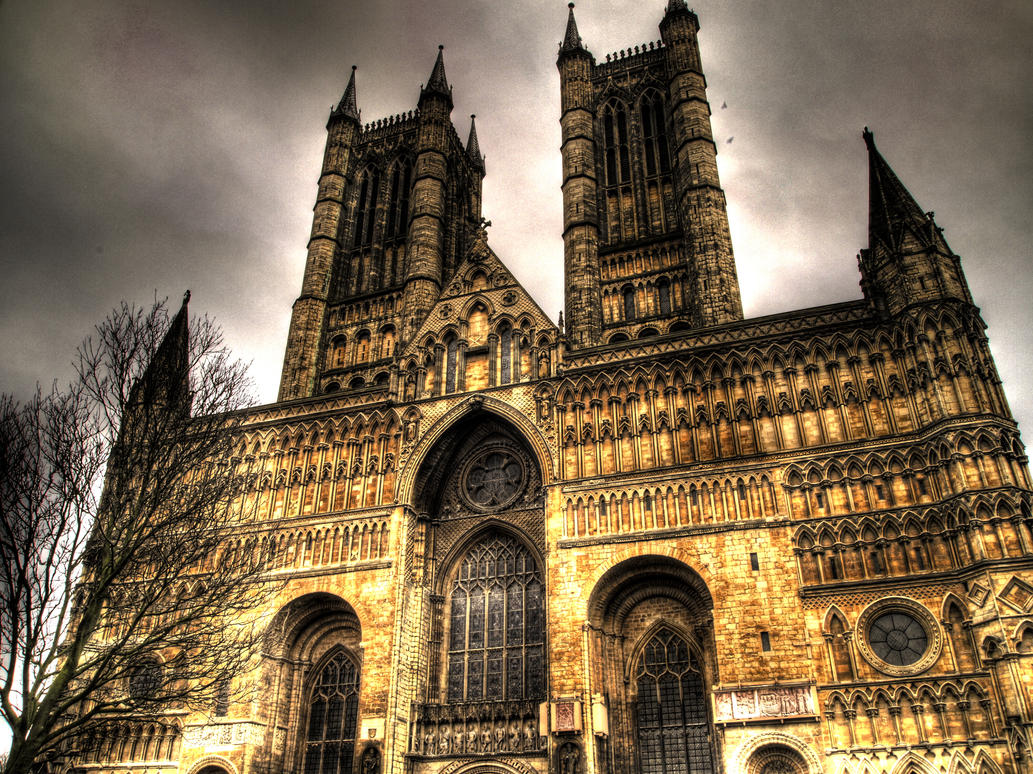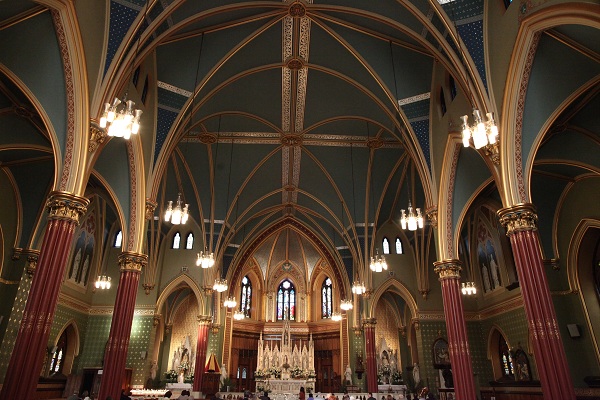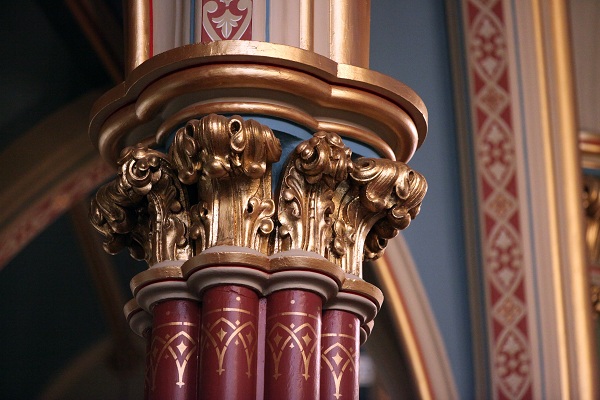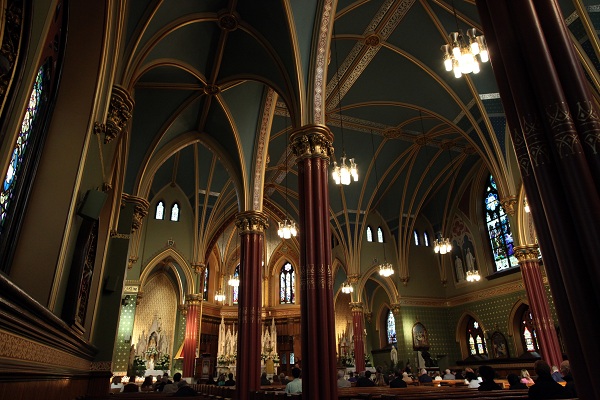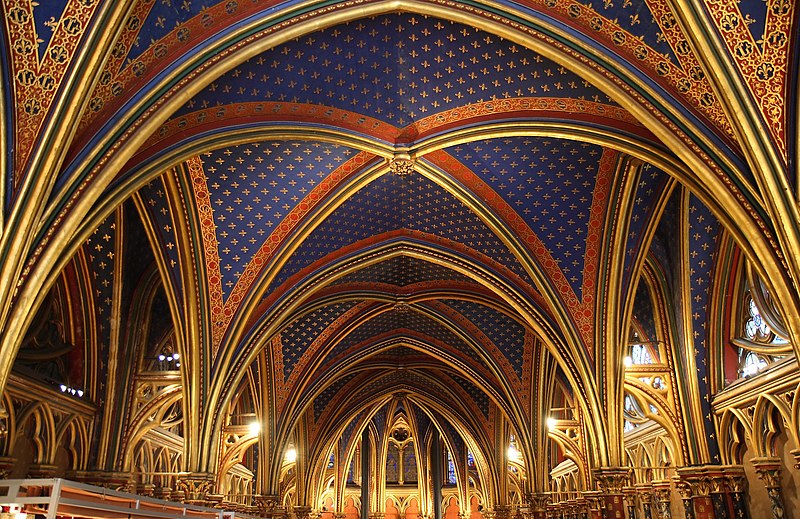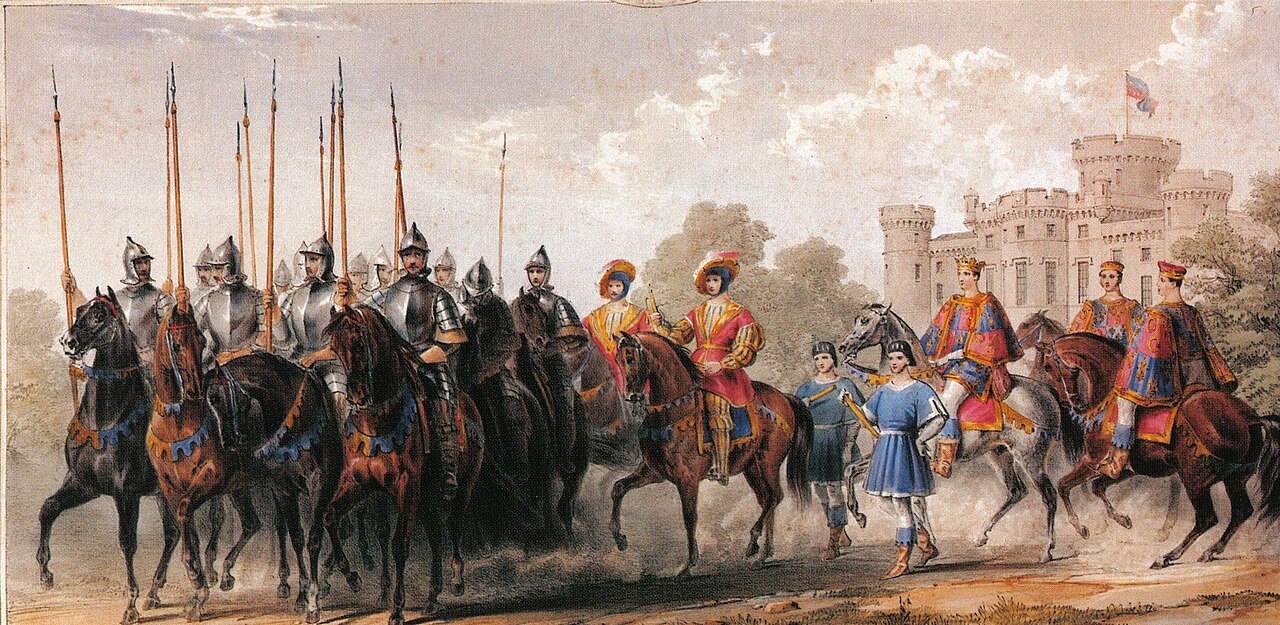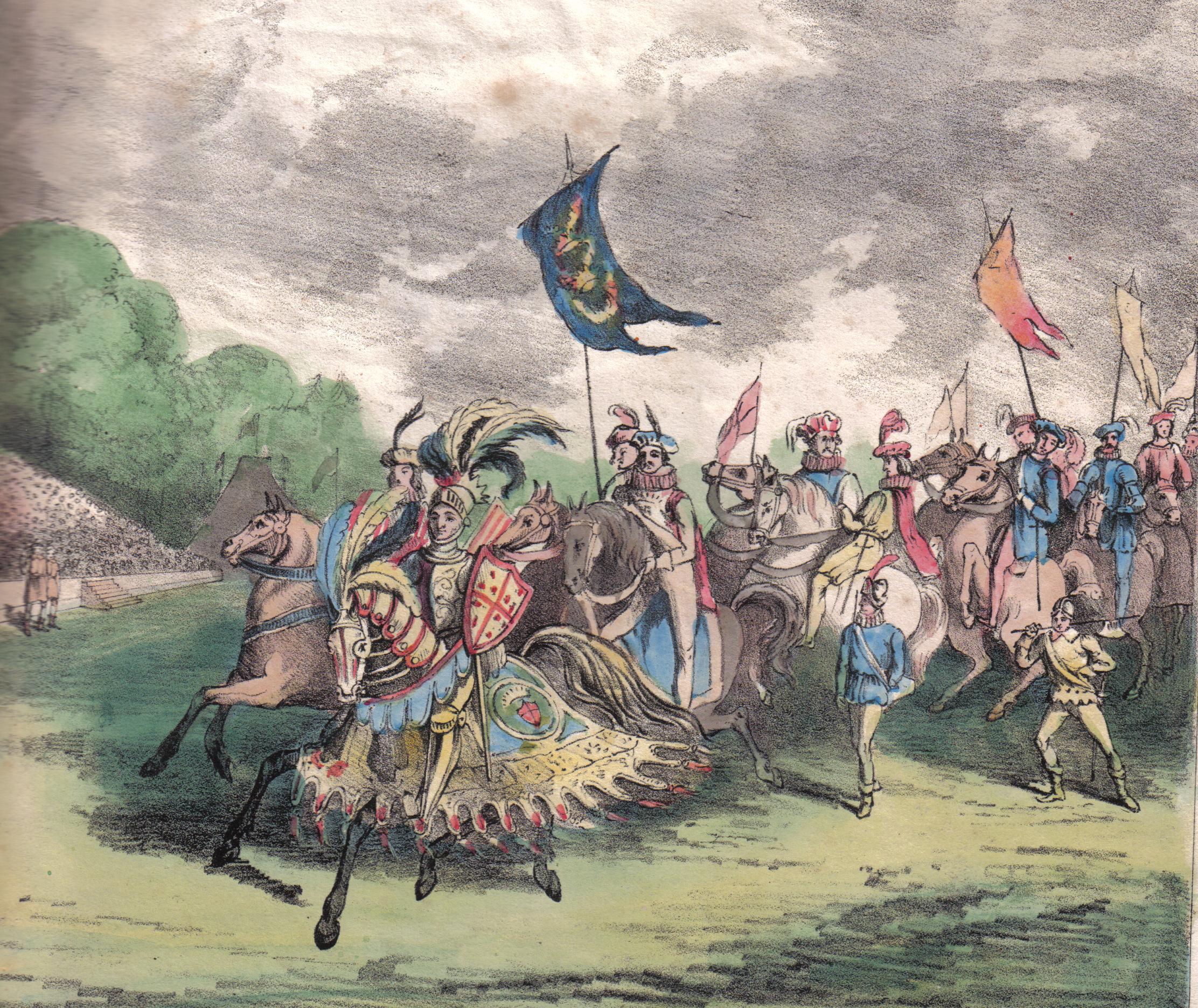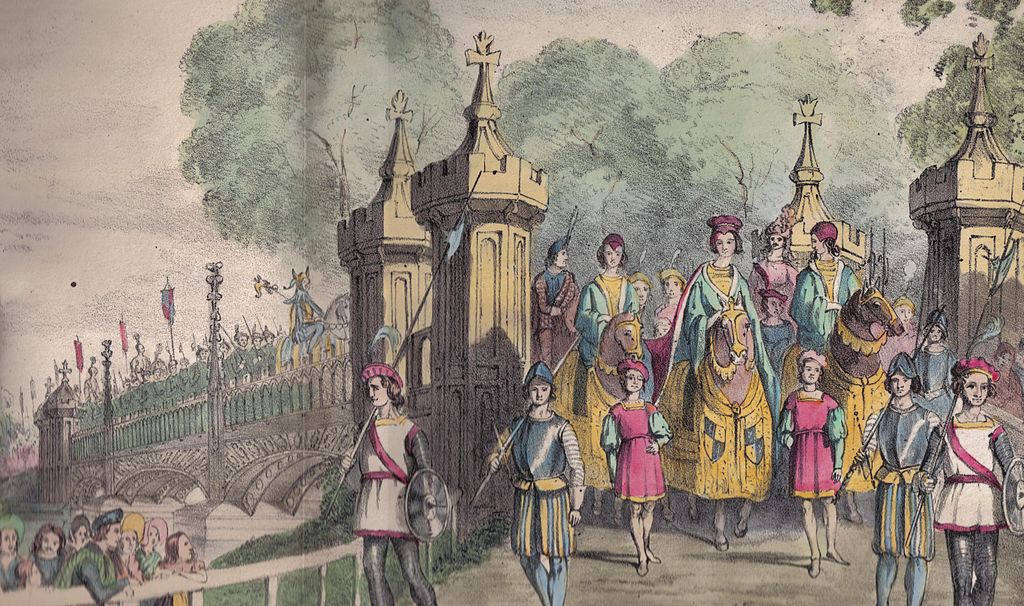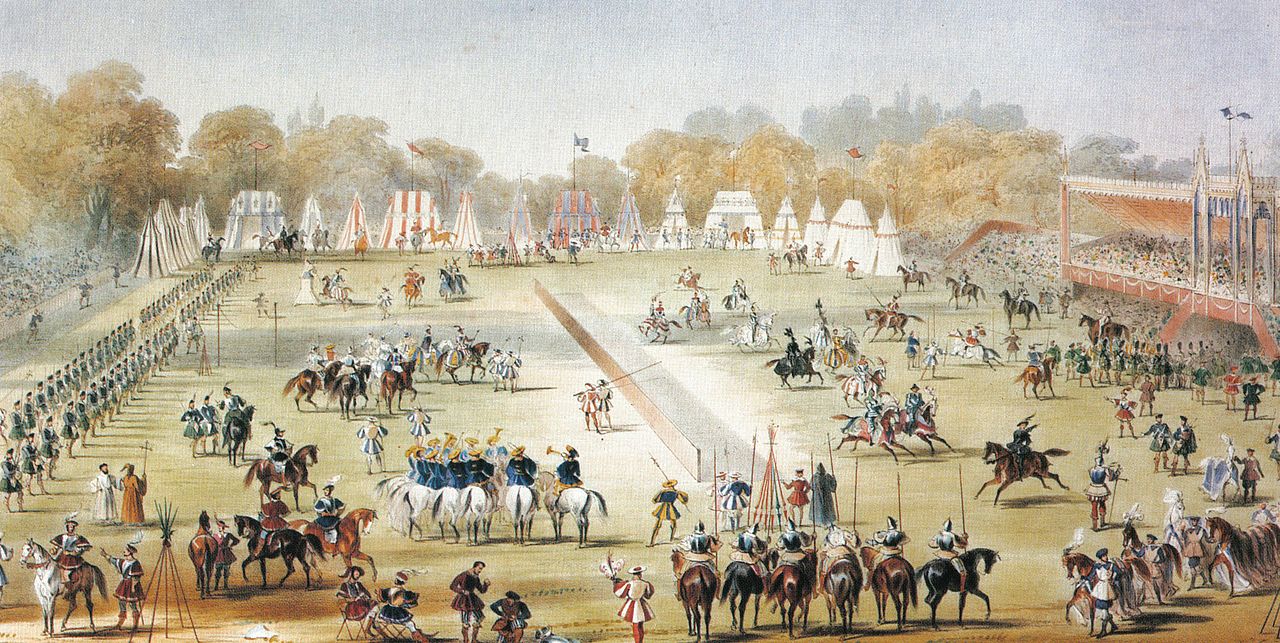 |
| Coming soon: the new cathedral of Orange County! |
Someone who read my previous article on painted churches brought to my attention the fact that the Catholic
Diocese of Orange had been on the market for a new cathedral. But with a rough
economy and a few million bucks in the red after the latest onslaught of
pedophile priest lawsuits, who has the money or inclination to give God His due
and build a worthy new temple from scratch? Tod Brown, Bishop of Orange, got
lucky: it turned out that the Crystal Cathedral, a monstrous heap of glass and
steel in Garden Grove, California, home of the Reformed Protestant “Hour of
Power” televangelism ministry, had mismanaged themselves into bankruptcy. It
was a win-win situation in the making: the Diocese could buy the Crystal
Cathedral (ironically neither made of crystal nor actually a cathedral) for its
own on the cheap, and the Hour of Power guys could crawl out of debt. At a
“mere” $58 million, it was a steal. The deal was done, and by June 2013, the
building will be re-christened Christ Cathedral and consecrated to Catholic
worship.
Now, casually glance at the comments
box of any news article reporting this transaction; this one from the Huffington Post will do; and the universal response
will be from some reader with absolutely zero vested interest in the matter cry
out with righteous indignation, “how dare those pedophile-enablers throw away
millions of dollars on a building while kids are starving in Africa! If Jesus
were here, he’d sell the building and give all the money away to the Peace
Corps!” Never mind that Jesus is a fairy tale to them, anyway. Granted, they’re
certainly right about us Catholics being pedophile enablers. If we really cared
about protecting our children, not to mention the honor of the eternal Church,
we’d have demanded more accountability and justice enacted upon offending
priests a long time ago. But that’s a topic for greater minds to write on. I’m
only a poor aesthete. My goal today is to explain how the self-righteous
commenters are wrong on all the other counts, how the Diocese of Orange is a
den of thieves and cheapskates, and how once again, our medieval forebears knew
the score and had their priorities straight.
“A
new cathedral is a waste of money. If you need a worship space, there are
plenty of pre-existing buildings to buy or rent out.”
It seems like a reasonable objection
at first, but if you scratch the surface, you see the cult of utilitarianism rearing
its monstrous head. Millions of Americans are unemployed or underemployed as we
speak. Is it a waste of money to hire them and give them work? And not just a
job, but work dedicated to something higher than themselves, which will remain
standing long after they’re dead and buried. Is art a waste of money? Consider
that the works of the great medieval and Renaissance masters were commissioned
largely by the Church, once the biggest patron of the arts in the western
world. But because art is not “practical” in our current age or it doesn’t sell
a product, it’s therefore a waste of money according to the utilitarian. Then
they wonder why fine art is now solely for the purpose of separating rich
people from their pocketbooks and shocking anyone they deem a poor country
bumpkin in need of enlightenment (disregarding the fact that they’ve so
desensitized us to their pitiful screams for attention that the only thing
truly shocking left to paint would be an old-fashioned, representational
masterpiece). Yes, friends, miserly utilitarianism is the death of art, for
art can only be born from a culture where people value leisure and creativity.
 |
| A waste of money. |
“It’d
be a crime to spend all that money on bricks and mortar when kids are starving
in Africa.”
And there are kids starving in America too,
for that matter. In any case, those African kids aren’t any hungrier now than
they were in the 1300’s when Gothic architecture was at the height of its glory.
Notre-Dame, Chartres, and Westminster Abbey were all raised by a people in a
sustenance economy for whom war and famine were everyday realities. How were
they able to endure such intense hardships and still raise wonders of the
world? It’s simple: cathedrals actually do feed people. They feed the soul. The
cathedral-haters love to perceive Christ as a modern iconoclastic social worker
who had no use for temples and would melt all the gold in Rome and sell it to
feed the world for a few days. They conveniently forget that He also said, “not
in bread alone doth man live, but in every word that proceedeth from the mouth
of God.” A cathedral is the word writ large. It’s the word of God towering atop a
hill like a refuge, even a fortress against the banality of the modern world
with its insipid fads, manifestos, concrete jungles, and false idols. Standing
in the nave, the word envelops you, unfolding the story of salvation in art,
song, scent, speech, symbols, and sacrifice upon the altar. Frankly, we need cathedrals
more than ever before to lift our minds and hearts to the divine.
 |
| People wasting their time. |
“At
least Bishop Brown saved his diocese a lot of money and gave an
already-existing church a new purpose.”
That abomination known as the
Crystal Cathedral would serve its architectural purpose better as a greenhouse
for exotic plants. As a church, it’s completely useless, unless we’re so dull
as to reduce the idea of “church” to a building with four walls and a roof. Diocesan
officials said that in order to build a cathedral from scratch, they would have
to spend up to $200 million. Okay. Consider the following, then. Last year saw
the release of Star Wars: The Old
Republic, an online computer game that cost nearly $200 million to develop.
We live in an age that’s so prosperous, we can afford to blow $200 million;
enough to build another Notre-Dame on the west coast of America; on something
that doesn’t even exist outside of a computer screen! (And a game that’s not
even all that much fun to play, though that’s another story.) Even in the game
developers’ highest hopes, they couldn’t expect a large customer base to still
be paying per month for this game ten years from now. It’s a fleeting
enterprise by nature. A cathedral, on the other hand, is expected to stand for
five centuries or longer. With eternity in mind, Bishop Brown’s “economic”
gesture begins to look like a groom presenting his bride with a ring of plastic
instead of gold.
 |
| Bishop Brown, master economist. |
“Well,
we just don’t have the money or talent to build another Chartres these days.
What do you propose, you insufferable medievalist?”
It’s a fair question. In the Middle
Ages, the cathedral builders could at least count on the patronage of the
wealthy and the town populace to converge and provide the manual labor. Towns
would compete against one another to see who could build the most splendid
church and thereby gain God’s favor. This blog will be long subsumed and
archived into the great digital beyond before the guilds rise again. Still, we
do have two distinct advantages over our ancestors: the Internet, and vast sums
of disposable income. We live in an age when artists and designers can post
their projects online and fundraise thousands, even millions of dollars through
websites like Kickstarter. Why not build a church too? There’s an ambitious
architectural artist somewhere out there, waiting for you to email her and ask
her to draw the cathedral lodged in the depths of her imagination. Post the
drawings and detailed plans online and watch the cash roll in. There’s a whole
legion of people prowling the web out there right now, charitable but weary of
the steel heaps of trash that pass for houses of worship now. We’re only
shooting ourselves in the foot by refusing to take full advantage of the tools
of the digital age.
And at last, for all the misers,
cheapskates, and penny-pinchers still unconverted by my arguments thus far, I
appeal to the Gospels.
“Mary therefore took a pound of ointment of right spikenard, of great price, and anointed the feet of Jesus, and wiped His feet with her hair; and the house was filled with the odour of the ointment. Then one of his disciples, Judas Iscariot, he that was about to betray Him, said: ‘Why was not this ointment sold for three hundred pence, and given to the poor?’ Now he said this, not because he cared for the poor; but because he was a thief, and having the purse, carried the things that were put therein. Jesus therefore said: ‘Let her alone, that she may keep it against the day of My burial. For the poor you have always with you; but Me you have not always.’”
More money-wasting ventures:


